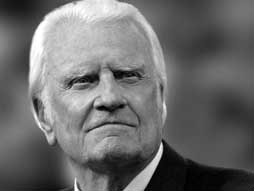Photos courtesy of Ken Bodnar, My OCHS, Dave Beirness and Jeanette Kimball
Many people, myself included, subscribe to the notion that even if you haven’t seen a childhood or teenage friend for decades, you can both pick up pretty much where you left off 10, 20, 30, or even 40 years ago. That’s how comprehensive the comfort zone is between you.
I have a handful of friends, mainly from my days growing up in Oshawa in the 1960s and 1970s that fall into that category. It’s quite a small list. In most cases I went to school with them at some point, although many of my classmates I did lose touch with after high school. In fact, it wasn’t until I got an e-mail from Ken Bodnar June 30 that I learned Kathleen Taylor, a classmate all through school from St. Christopher Separate Elementary School on Annapolis Avenue to Oshawa Catholic High School on Stevenson Road North, had just been appointed a member of the Order of Canada.
Taylor, 58, is the chair of the board of RBC and the former president and chief executive officer of Four Seasons Hotels and Resorts in Toronto. Thank goodness for Ken or I’d have no idea probably about Kathleen’s recent honour. Congratulations, Katie!
Ken Bodnar’s blog called My OCHS at http://myochs.blogspot.ca/ is the first and last word on our high school days and years. Ken has it all: history, both official and unofficial, trivia, the arcane, milestones, biographical sketches and old photos from his own archive of old negatives, yearbooks and other sources. Ken is the unofficial archivist for all things relating to St. Joseph’s High School, Oshawa Catholic High School, or Monsignor Paul Dwyer Catholic High School, as students now call its hallowed halls.
In a new study published in April in the journal Royal Society Open Science in London, the authors set out to explore “the way life history influences human sociality and the way social networks are structured.
“Our results indicate that these aspects of human behaviour are strongly related to age and gender such that younger individuals have more contacts and, among them, males more than females.
“However, the rate of decrease in the number of contacts with age differs between males and females, such that there is a reversal in the number of contacts around the late 30s. We suggest that this pattern can be attributed to the difference in reproductive investments that are made by the two sexes. We analyse the inequality in social investment patterns and suggest that the age – and gender-related differences we find reflect the constraints imposed by reproduction in a context where time (a form of social capital) is limited.”
“The number of friends a person has can be difficult to quantify, especially when social media has served to widen the definition of ‘friend,’” observed freelance reporter Elsa Vulliamy in a May 23 piece on the study in the London-based Independent, “but these scientists stuck to the basics – they measured how many people subjects contacted via telephone.
“The study shows that both men and women continue to make more and more friends until the age of 25, when the numbers begin falling rapidly and continue to fall throughout the rest of a person’s life,” wrote Vulliamy.
“Researchers found that the average 25-year-old man contacts around 19 different people per month, where 25-year-old women contacted an average of around 17.5 people.
“By the age of 39, however, men and woman are calling an average of only 12 and 15 people per month respectively.
“The rapid decline in the number of people being contacted by both men and women comes to a stop around the age of 80, where the numbers plateau at around eight for women and six for men.”
What I have observed personally is that after my mid-20s, most of my new friends over the years have tended to be professionally or work connected, directly or indirectly. Or at least travel in the same social circles. Sure there are some exceptions to that observation, but not many.
On the other hand, I would venture to say most of my friends up to my mid-20s, when I began working as a daily newspaper reporter, were of greater variety – eventually – in terms of occupational backgrounds. That may well be because none of them really had an occupation, unless playing road hockey or house league baseball counts. Mind you, we did get a few chances to rub shoulders, however, briefly through road hockey and baseball with greatness, even if their greatness was just starting to shine through when we were kids.
I didn’t get to skate with Bobby Orr, hockey’s greatest defenceman. But I did get to play a bit of road hockey with him. My occasional contact with Orr between 1964 and 1966 was limited to some road hockey shinny in our Oshawa neighbourhood.
Orr, from Parry Sound, Ontario, was playing OHA Major Junior A Hockey then for the Oshawa Generals, a farm team of the NHL Boston Bruins. He was between 16 and 18 then. Bobby boarded with a family on Walmer Road, as did Wayne Cashman, the hardworking right-winger, who would go onto captain the Boston Bruins.
Sometimes they’d let us younger kids, who were seven to nine, join in. Bobby and Wayne were like that.
Hockey was our lives. Every Saturday meant a dinner of steak and fried onions at 4 p.m. After dinner it was off to mass at St. Gregory’s for 5 p.m., and back home again only to be knocking on Mike Byrne’s door at 6 p.m. to “take shots” with him on net. Mike shot left. I used a right-handed Hespeler. I am quite convinced that childhood friendships like I had with Mike Byrne are largely accidents of geography, as it were. There is a common saying that while you can’t choose your family, you can choose your friends. Maybe. Sort of. At least after you’re old enough mid-high school to get a driver’s licence or later when you’re off at college or university. But the pool or circle you are going to choose friends from when you are say between six and 15 is going to be based largely on geographic proximity to where your family lives, likely within walking distance. Accidents of geography. Sure you can make choices within that pool or circle; not everyone within it is going to be your friend, but what friends you do have as a kid are going to, for the most part, come from within it.
In 1972, Mike Byrne and I were both 15 and coached a Nipigon Park house league baseball team, which included future Winnipeg Jets’ hockey legend Dale Hawerchuk, then nine-years-old. Unlike road hockey, where we had been the youngsters hanging out with Orr and Cashman, in baseball the reverse age factor was in effect for baseball. We were the old guys. The coaches.
Last Thursday, I saw my old friend Dave Beirness, from Oshawa. He was in Winnipeg for a few days and rented a car and made the 750-kilometre drive up Highway 6 to Thompson for an overnight visit. I’ve known Dave since about 1974.
In the spring of 1976 we both drove white company-owned Plymouth Dusters delivering pizzas for Mother’s Pizza Simcoe North in Oshawa for $2.65 per hour plus tips. Those beasts could just fly! What pizza company delivers in that cool a car today? Or for that matter, what pizza company has a fleet of staff delivery vehicles of any kind? “I’ve always said it was the best pizza restaurant with good food!” Dave said in an e-mail back in 2013. “I even loved working for them, even if I had to drive a Plymouth Duster!!!”
You can imagine how pleased we both were then to read a few years ago, around the same we re-connected in 2013 actually, that the iconic Canadian pizza parlour chain from the 1970s – with its swinging parlor-style doors, Tiffany lamps, antique-style chairs, red-and-white checked gingham tablecloths, black-and-white short silent movies shown on a screen for patrons waiting for their meal to enjoy, root beer floats and pizzas served on silver-coloured metal pedestal stands, was to be reopened by two local entrepreneurs, Brian Alger and Geeve Sandhu, in April on Queenston Road in Hamilton, Ontario. By all accounts they are doing well with the venture.
Mother’s Pizza was founded in 1970 by three partners, Grey Sisson, Ken Fowler and Pasquale Marra, and got its start in the Westdale Village area of Steeltown. The chain eventually grew to about 120 locations in Canada, the United States and England.
Sisson, Fowler and Marra sold their stake in Mother’s Pizza in the mid-1980s, after taking the company public. In 1986 there was a leveraged buyout and Jerry White became chief executive officer. He sold franchises to a group of Toronto Blue Jays players but revenue began to plummet.
Little Caesars bought some assets of the Mother’s Pizza chain when it was in receivership in 1989, while existing franchisees also had the option to purchase their restaurant outright.
Locations began to close a few years later, including the landmark first one in Westdale in 1992, although one Mother’s Pizza franchise from the old days has apparently hung on all these years at 10 Country Hills Landing NW in the Beddington Mall in Calgary, making it something of a cult favourite for Mother’s Pizza aficionados.
Dave and I went to different high schools (R.S. McLaughlin Collegiate for Dave, while I was across the street at what was then Oshawa Catholic High School) but in the fall of 1976, months after our pizza delivery experiences, we both wound up heading off to Trent University.
The last time I saw Dave before July 7 was 24 years ago in July 1992 at a Sunday barbecue at his place in Oshawa before I headed down to North Carolina for a week. Dave went on from university to be an elementary school teacher in the Durham Region for many years before retiring in 2011.
While Dave is not on LinkedIn, Twitter or Facebook (except for trolling his wife’s Facebook page occasionally when curiosity gets the best of him) he does Google searches and uses email. He tracked me down in Thompson almost 3½ years ago now when I was editing the Thompson Citizen and Nickel Belt News.
It started with an e-mail I received at work on Feb. 5, 2013: “Dave Beirness here! I have finally (I think) found out where you are. Ron G. and I were both thinking about you and your whereabouts during our high school reunion this past fall.
“We have a lot of catching up to do so keep in touch and please give me a home email address so I don’t have to correspond through your work address.
“P. S. I knew it was you when I saw your picture. Your head still has the same tilt.” Dave calls it my “thinking” pose. Friends like Dave can get away with implying work email really wouldn’t be appropriate to use from here on out because of the possible nature of the ensuing correspondence, and also remark on the tilt of your head in your newspaper photo they spotted in your online column without sounding offensive, but rather simply candidly familiar.
It’s rather refreshing because who actually tells you how it really is after you reach a certain age and stage of life? Your spouse or partner? OK, sure. And your former university roommates, that’s who.
Dave and I have shared more than four decades of friendship from high school days in Oshawa and delivering pizzas for Mother’s Pizza through being roommates off-campus from September 1977 to April 1978 at a townhouse at 1100 Hilliard Street in Peterborough, along with Ron Graham, another friend from Oshawa, while we were at Trent University in Peterborough.
While not all former roommates considered themselves friends (I had several excellent roommates who were just that and not really friends per se) they were the people who lived with you under the same roof when you were 19, 20, or 21-years-old, or whatever. In many cases, they were the first non-family, non-related people we lived with as young adults after leaving home.
A photo from that academic year, taken no doubt after a night of hard studying, shows me with Dave in my room and what appears to be a mickey of Canadian Club rye in one hand and a libation in the other. The colourful shirt is my dad’s, which was his favourite cottage shirt at Lake Simcoe, and which I somehow must have convinced him to donate to his son for university.
The purple and gold headboard were also my dad’s handiwork. As a teenager in Oshawa, I had some fondness for both the UCLA Bruins basketball team and the NHL’s Los Angeles Kings, both of which were sporting purple and gold uniforms in those days, so I convinced my father to paint my bedroom at 537 Nipigon Street in Oshawa, along with some of the furnishings … purple and gold, of course. I remember the realtor and my father discussing just how many coats of paint it might take to cover over my inspired idea (especially the purple) when my parents retired and put the house up for sale in June 1976. It seems some of the furnishings went off to university with me and escaped any repainting.
Sitting out in my backyard late in the afternoon last Thursday with Dave, and then later at Santa Maria Pizza & Spaghetti House on Station Road (where else would ex-Mother’s Pizza drivers go for dinner but to a pizza joint?) and Pub 55 (as in Thompson at 55.7433° N latitude) did yield several surprises though, as we put back a couple of Shock Top Belgian Whites and other libations.
While some of the conversation inevitably trended to things like “whatever happened to who?” questions back and forth, I learned a couple of things about Paul Sobanski, who is a mutual friend, but one Dave has kept in touch with over the years, while I sort of lost track of Paul. Truth is I’ve known Paul probably 10 years longer than Dave. I met Paul when we were six and seven-years-old and he lived in the next block down from me on Nipigon Street in Oshawa. I met Mike Byrne the same year. He lived on the same street between Paul and me.
Paul went off to Queen’s University a year before I finished high school, if I recall correctly (again, like Dave, Paul was at R.S. McLaughlin Collegiate, while I was across the street at Oshawa Catholic High School) to study engineering. From our conversations before he went off to university, it seemed Paul wanted to pursue engineering at Queen’s and then maybe do some specialized work at General Motors Institute (GMI) in Flint, Michigan before launching his career with General Motors Canada at the plants in Oshawa. In fact, during my summers working at GM in Oshawa as a university student from 1976-1979, I heard that Paul was also working elsewhere in the plants for the company at least some of those summers.
So not seeing Paul, I simply assumed his trajectory put him on a 30-year or so career with General Motors that only would have ended a few years ago with retirement. Journalists learn early on never to assume anything. Perhaps that rule should be extended to friendship also; Dave, when he stopped laughing, told me Paul had only worked for General Motors for the first three or four years of his career perhaps in the 1980s, before heading off to work as an engineer outside the automotive industry. Now Paul has indeed retired. To Peterborough. A place I lived for years and to which Paul had no known connection prior to retirement. At least that I know of. But I won’t assume anything.
Before he ventured north last week, Dave’s wife remarked to him I was a rather prolific poster of Catholic articles on Facebook. Which is quite true. Dave was nonplussed. “John’s always been a Catholic. He went to Oshawa Catholic High School,” Dave said his reply was. Dave himself is Protestant or perhaps what might more likely be described today as among that growing cohort pollsters describe as ”nones” (as opposed to nuns). While my Protestant friends went mainly to R.S. McLaughlin Collegiate, part of the public school system, a good number of my Catholic friends in what was then known as the “separate school” system wound up transferring to R.S. McLaughlin Collegiate after completing Grade 8 at St. Christopher Separate Elementary School or even more so after Grade 10 at Oshawa Catholic High School, spending their last three high school years at R.S. McLaughlin Collegiate for Grades 11, 12 and 13, as Catholic schools in the 1970s in Ontario were only taxpayer-supported as far as the end of Grade 10.
After that they were considered private schools and parents were required to pay tuition, which in the early 1970s, was running at about $300 per year, I believe. It sounds like a modest sum, and while it wasn’t prohibitively expensive for most, it was at the same time not an inconsiderable expense for Catholic parents who were middle-class blue collar wage earners making under $4 per hour on average in 1973, along with the added costs of mandatory school uniforms – grey flannel pants and navy blue blazer and tie for the boys and white blouse and blue kilt for the girls.
According to Statistics Canada historical data, the average manufacturing wage earner in Ontario in 1973 made $8,042 in annual salary, which works out to $154.56 per week or about $3.87 per hour for a 40-hour work week. So $300 in private annual tuition for a Catholic high school for senior grades represented almost two week’s annual salary. It was a sacrifice for many Catholic families. Other Catholic students, however, transferred from the Catholic to public system in the early 1970s for philosophical reasons flowing from the great social changes sweeping the Catholic world in those early years after the end of the Second Vatican Council, while others transferred simply for reasons of being with their peers and friends, if the majority were in the public system. The reverse occurred, too, as a small number of Protestant families sent their children to the private Catholic high school system, attracted not by Catholicism per se, but rather a sense, justified or not, that Catholic schools had a somewhat higher quality of education and more rigorous discipline.
I’m not sure how reassured Dave’s wife must have been when he went onto to tell her that Paul Sobanski had told him as kids I used to excitedly want to talk to him about the Second Vatican Council, which ended on Dec.8, 1965, when I was eight, and had opened on Oct. 11, 1962, when I was five. Mind you, as a kid, my idea of fun late on a Saturday afternoon at the cottage at Lake Simcoe, near Beaverton, Ontario and down the road a small piece from Orillia and Canadian humorist Stephen Leacock’s somewhat fictional, somewhat true Mariposa setting for his 1912 classic Sunshine Sketches of a Little Town, was walking the beach road past the Talbot River and down to the blue Toronto Star “honour” coin box and buying the unbelievably fat Saturday Star. My main interest was the “Insight” section and the rotogravure colour-printed Star Weekly magazine.
More than four decades of friendship with Dave. It’s been a long and sometimes strange but always interesting trip.
You can also follow me on Twitter at: https://twitter.com/jwbarker22


































